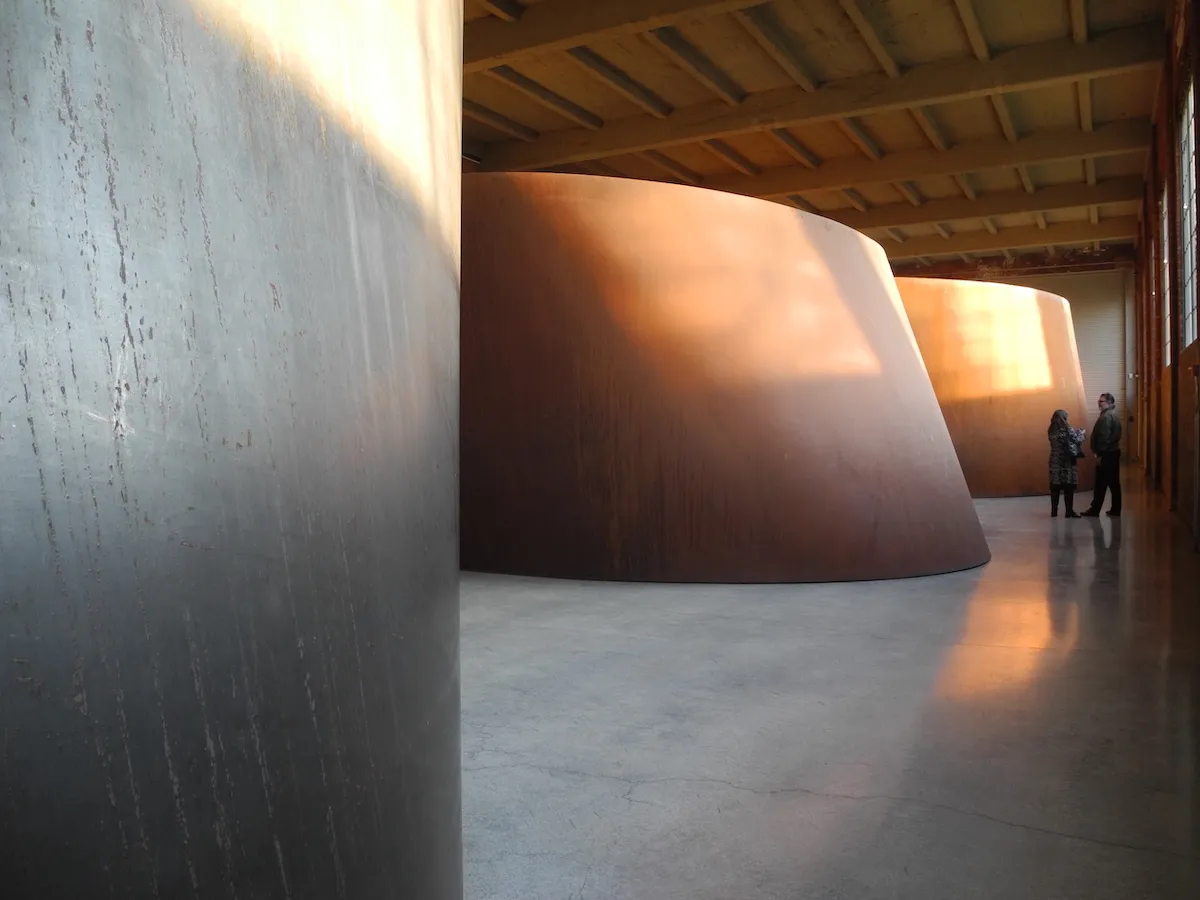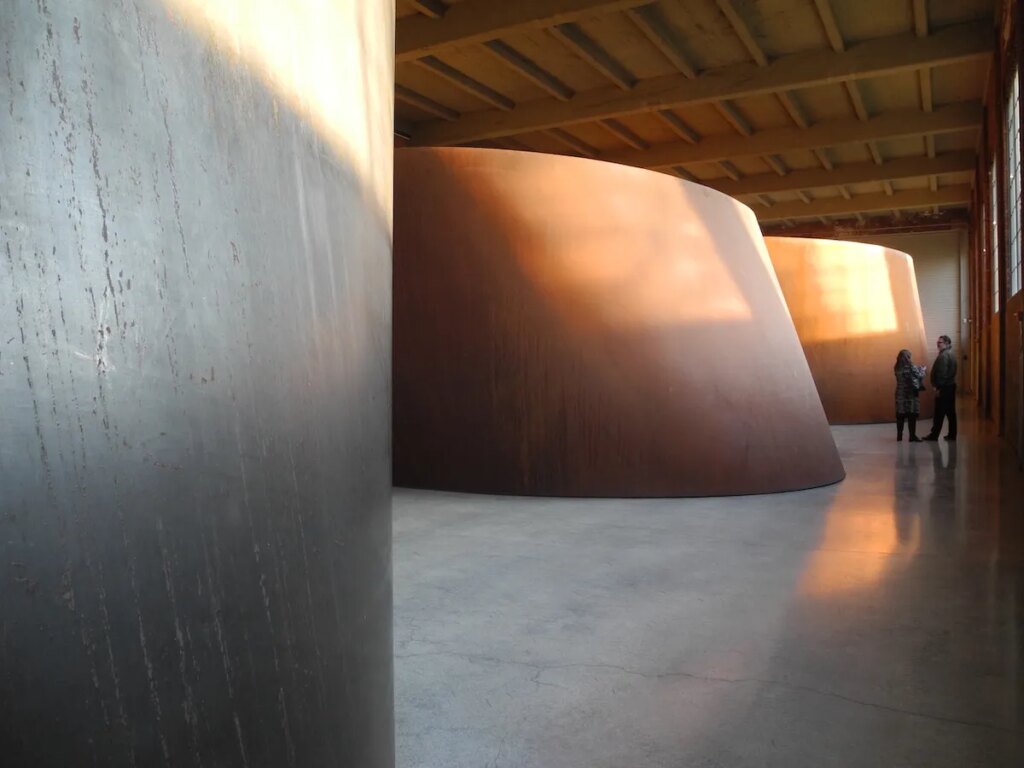
To receive Morning Links in your inbox every weekday, sign up for our Breakfast with ARTnews newsletter.
THE HEADLINES
IN MEMORIAM. Richard Serra, the sculptor whose monumental steel works defined the Minimalist art movement, has died at 85, reports ARTnews senior editor Alex Greenberger. “Serra crafted gigantic artworks that enlisted spirals, cubes, and cones of steel. These works loom over viewers, threatening to squash them,” writes Greenberger. They have also been hailed by critics as pushing sculpture into new conceptual realms, and Serra has shown in prestigious institutions across the globe, from Dia:Beacon in New York, to Qatar. But his pieces were not always admired. A 120-foot-long bar of Cor-Ten steel in New York’s Financial District, titled Tilted Arc (1981), was ultimately removed, “because people hated it so much.”
BRITISH MUSEUM SCANDAL. The British Museum is suing its former curator Peter Higgs, alleging he stole more than 1,800 items from its collection, reports Karen K. Ho, senior writer for ARTnews. Higgs was fired in July 2023, after the museum discovered approximately 2,000 missing, stolen, and damaged items from its collection, including ancient gems and gold jewelry. Exacerbating the controversy, many of these items had been spotted on eBay by an eagle-eyed collector, whose warnings to the institution were reportedly dismissed. The scandal has tarnished the museum’s reputation and led to the resignation of its leaders, including director Hartwig Fischer. Higgs has denied the allegations against him.
THE DIGEST
The mythic floating door that saved Rose, played by Kate Winslet, but not Jack (Leonardo DiCaprio) in the film Titanic, just sold for more than $700,000 at a Treasures from Planet Hollywood auction. The door is one of film’s most controversial props, spurring decades of debate about whether both lovers could have squeezed onto it together, sparing their lives. [Entertainment Weekly]
Banksy’s recently painted mural in London has been covered with plastic affixed to a grid, blocking the artwork from view. Just days after it was unveiled, white paint was found splashed across large swaths of the work. [BBC]
A drawing from the American Revolution, bought in a batch of sketches from an antiques dealer in the 1970s, is in fact one of maybe a dozen existing eyewitness depictions of Continental troops. The drawing also includes women and children, who were rarely featured in artwork about the war, and will join the collection of the Museum of the American Revolution. [Philadelphia Inquirer]
Cambridge city council has ordered the removal of a statue of the late Prince Philip, that is so widely reviled, it has been called “possibly the poorest quality work” ever submitted, and no artist has admitted to making it. The abstract rendition of the late queen’s husband depicts him in academic robes with a face “resembling a twisted owl mask,” writes Emily Dugan. [The Guardian]
France’s judicial Conseil d’Etat (Council of State) has blocked a controversial bill on restituting art to Africa and other former French colonies. The bill was meant to be introduced in parliament early next month, but the high court for administrative cases said the bill’s stated motives for restitution— “international relations and cultural cooperation”—did not justify removing artworks from the country’s national collection. The bill reportedly refrains from mentioning that restitution should be granted to right past wrongs during France’s colonial era, a still heavily debated period. [Le Monde]
A group of Toronto artists is campaigning for arts-funder Scotiabank to divest from Israeli defense and homeland security manufacturer Elbit Systems. Yesterday, activists launched a “No Arms in the Arts” program targeting cultural events sponsored by Scotiabank, including Hot Docs Film Festival, the Scotiabank Giller Prize, and the Toronto Biennial of Art. [Hyperallergic]
The daily Süddeutsche Zeitung analyzes why Russia is lending its Venice pavilion to Bolivia free of charge in a report by Geertjan de Vugt, who writes that Russia is aiming to gain access to Bolivia’s lithium reserves. [Süddeutsche Zeitung]
Visitor figures for global museums in 2023 are in, according to The Art Newspaper’s report. Things are now “mostly” back to normal, and many leading museums have returned to pre-pandemic attendance, but not all, notably those in the UK. [The Art Newspaper]
THE KICKER
WATER HOMES. “What if building on the water could be safer and sturdier than building on flood-prone land?” That is the question Dutch architect Koen Olthuis asks in a New Yorker story about his vision of cities that float on water. The threat of water overtaking The Netherlands is “so endemic to the Dutch national psyche,” that is has inspired myths, along with designs by Olthuis and his firm Waterstudio, which specializes in homes that float, writes Kyle Chayka. As the threat of climate change and flooding has risen, the studio says demand has grown internationally, from floating pod hotels in Thailand, a “floating forest” in the Persian Gulf to help temper overheating, and even a “floating city” in the Maldives. Olthuis says he hopes to install thousands of floating, affordable-housing units around the world. “It’s a lifetime of trying to connect the dots toward that future,” he said.


